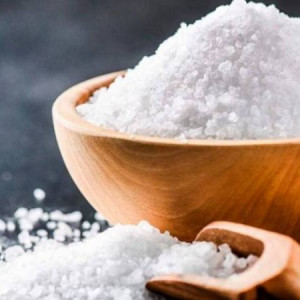Turmeric, also recognized as Haldi, is more than a spice or an ingredient in our cooking; it is an essential component of the Indian community. This yellow spice has a plethora of nutrition qualities. Turmeric has been used in Vedic culture for over four thousand years. This ingredient is indispensable in almost all Indian recipes. Turmeric is regarded as a healer's spice in Indian culture. Turmeric was known as "Indian saffron" in Medieval Europe.
Even Being a professional chef, I could merely recall a handful of Indian recipes whether it is a vegetarian or non-vegetarian dish, in which Indians do not add a pinch of turmeric. Turmeric is also used as a preservative for its yellow color in pickles and chutneys. A simple lentil dish with a touch of turmeric and green chili is tasty. Similarly, turmeric is added to any other recipe to give it that gorgeous yellow color. Turmeric is a plant that grows in many parts of India, and it looks like little chunks of ginger when fresh.
What is turmeric?
Turmeric is a popular spice made from the root of the Curcuma longa plant. It is a ginger family member and includes a substance called curcumin. Turmeric is used to flavor and color curries, mustards, kinds of butter, and cheeses, and has a warm, bitter flavor. The plant is a rhizomatous perennial herbaceous plant native to the Indian subcontinent and Southeast Asia that thrives in temperatures between 20 and 30 degrees Celsius (68- and 86-degrees Fahrenheit) with a significant quantity of annual rainfall. Each year, plants are harvested for their rhizomes, some for multiplication the following season and others for human use.
The rhizomes are used fresh or boiled in water and dried, after which they are ground into a deep orange-yellow powder that is commonly used as a coloring and flavoring agent in many Asian cuisines, especially curries, as well as for dyeing, thanks to the characteristics imparted by curcumin, the main turmeric constituent.
Culinary Applications
Turmeric is a crucial component in many Asian dishes, imparting a spicy, slightly bitter flavor and a mustard-like, earthy fragrance. It is mainly used in savory dishes, but it is also used in sweet dishes such as Sfouf cake. Layering rice flour and coconut-jaggery mixture on the turmeric leaf, then closing and steaming it in a specific utensil, is how special sweet delicacies, Patoleo, are made in India. To provide a golden yellow color, most turmeric is utilized in the form of rhizome powder. It is in canned beverages, baked goods, dairy products, ice cream, yogurt, yellow cakes, orange juice, biscuits, popcorn color, cereals, sauces, and gelatin, among other things. Curry powder has it as the main ingredient. Turmeric, like ginger, is commonly used in a dried, powdered form. It is used in a pickle with huge chunks of fresh soft turmeric in East Asian cuisine.
Turmeric is frequently used in South Asian and Middle Eastern dishes as a spice. Onions caramelized in oil and turmeric are often used in a myriad of Iranian Khoresh recipes. Turmeric is predominantly reported in the Moroccan spice blend Ras-el-hanout. Turmeric is used in a hot beverage described as "Turmeric Latte" or "Golden Milk," which is typically mixed with coconut milk. Haldi Doodh, a Turmeric Milk Drink, is a classic Indian recipe.
Significance to culture
In Indian households, it is also considered auspicious. When wedding invitations are sent around various parts of India, people mark one side of the cards with turmeric as a sign of happiness and good fortune. When a family lamented the death of a loved one in various Indian states, they eat food sans turmeric for 13 days. During these times, food deficient in turmeric evokes anguish and loss.
Therapeutic Benefits
Turmeric is also used in traditional Indian medicine. Curcumin, a flavonoid with anti-inflammatory characteristics, is abundant in it. It cleanses the liver, fights allergies, aid in digestion, and boosts the immune system. Women used to take baths with a paste of turmeric and oil since it is beneficial for the skin.
Turmeric is also renowned for its therapeutic benefits, and because curcumin and other molecules in turmeric may diminish swelling, it is widely used to treat diseases involving pain and inflammation. Turmeric is the root of a flowering plant that is extensively farmed in the tropics for its anti-inflammatory characteristics.
Turmeric powder has an earthy, mustard-like fragrance and a warm, bitter black pepper flavor. The World Health Organization, the European Parliament, and the US Food and Drug Administration have all acknowledged curcumin, a brilliant yellow substance generated by the turmeric plant, as a food additive. There is no high-quality clinical evidence that taking turmeric or curcumin is useful for treating any ailment, despite its extensive use in Ayurvedic medicine, where it is also known as Haridra.
In the subsequent post, I will attempt to highlight turmeric’s nutritional characteristics, which make it an ultimate superfood. You will be inspired by its healing advantages.















Follow Chef Sunil